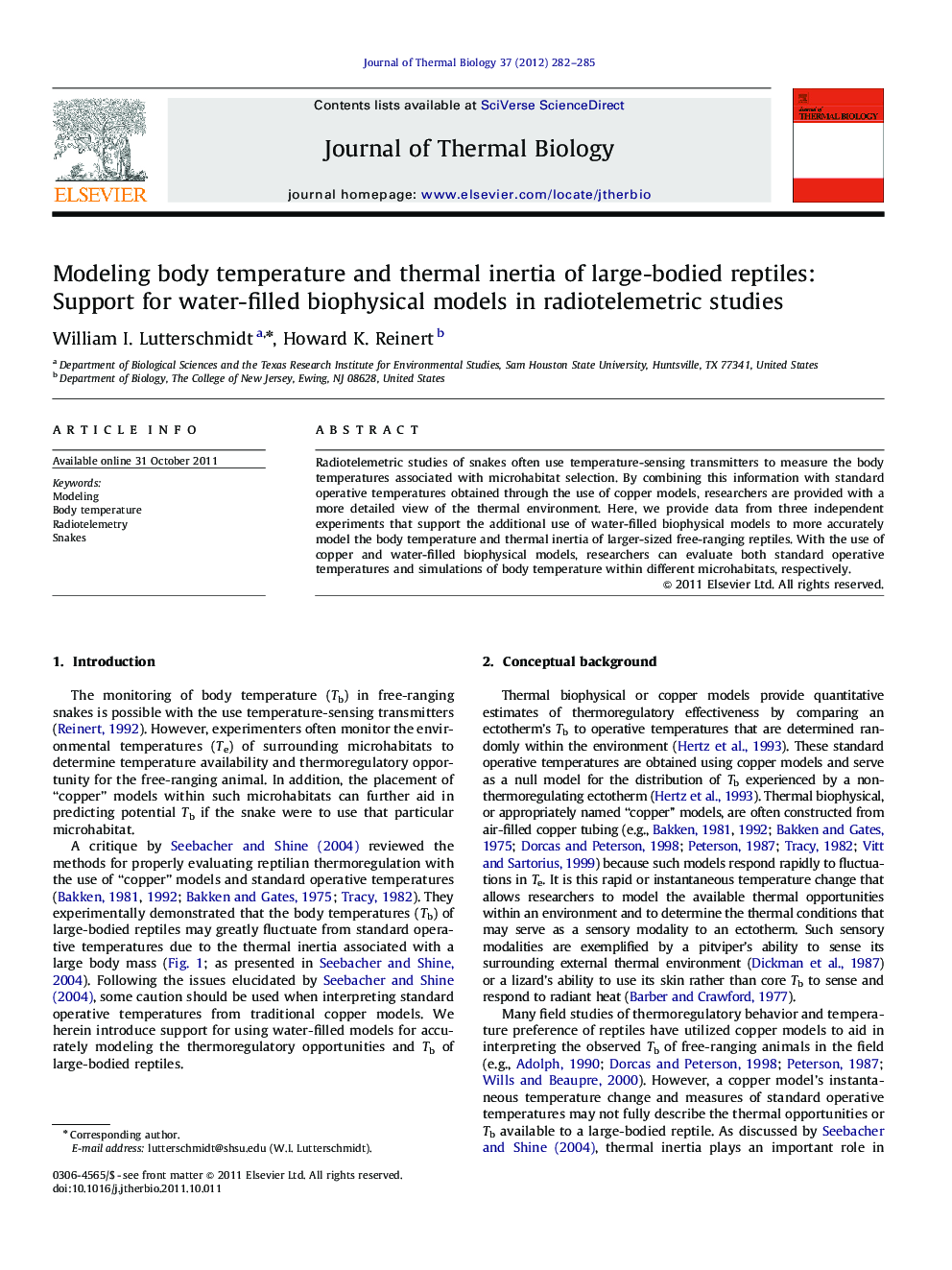| Article ID | Journal | Published Year | Pages | File Type |
|---|---|---|---|---|
| 2843290 | Journal of Thermal Biology | 2012 | 4 Pages |
Radiotelemetric studies of snakes often use temperature-sensing transmitters to measure the body temperatures associated with microhabitat selection. By combining this information with standard operative temperatures obtained through the use of copper models, researchers are provided with a more detailed view of the thermal environment. Here, we provide data from three independent experiments that support the additional use of water-filled biophysical models to more accurately model the body temperature and thermal inertia of larger-sized free-ranging reptiles. With the use of copper and water-filled biophysical models, researchers can evaluate both standard operative temperatures and simulations of body temperature within different microhabitats, respectively.
